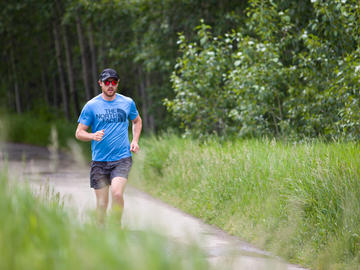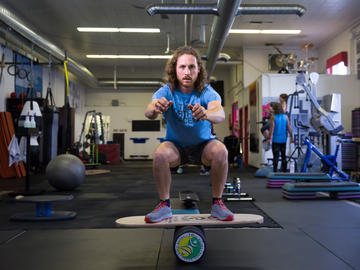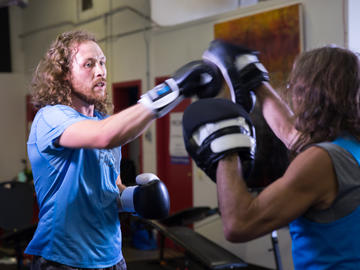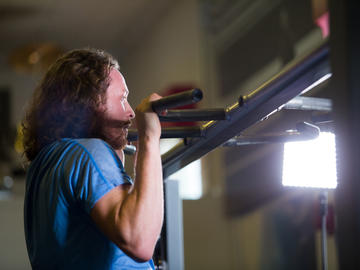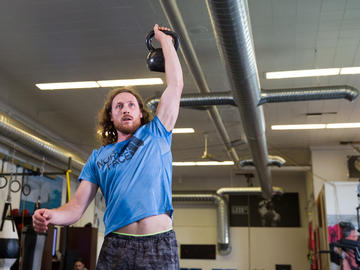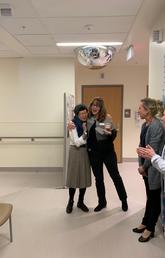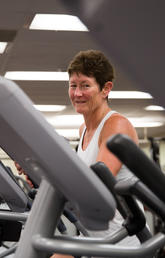July 22, 2019
Athlete uses his own body to study embodiment in sport

Just before starting his second year of a health sciences degree at UCalgary, Ian MacNairn was crossing the street when he was mowed down by an SUV. The driver didn’t stop and MacNairn started a very long physical recovery.
A couple of years later, hobbling around on crutches after yet another surgery, MacNairn and his supervisor Dr. Charles Mather, PhD, associate professor in anthropology in the Faculty of Arts, were discussing his final-year undergraduate research project in medical anthropology.
“We came up with this project to take my own self and do an ethnographic study — an auto-ethnography — exploring this idea of embodiment, essentially what is the body that one has by virtue of who they are and what they do in their life,” says MacNarin. “I was principally interested in looking at the changes that occur when a human body goes from one extreme of mobility to the other.”
His own body was a perfect research subject. Starting with the first extreme, not being able to walk after a surgery, MacNairn signed up for a 125-kilometre ultramarathon he saw advertised on campus, the Canadian Death Race in Grand Cache. That was 10 years ago.
Since then, MacNairn has not only aced his undergraduate auto-ethnographic honours thesis, he’s also participated in dozens of ultramarathons all over the world, competed professionally, completed a Master of Arts in sociocultural anthropology looking at ultra-marathoners, and he just finished a PhD studying the ethnography of the ultra-running community.
“It ended up being, by far, the largest doctoral project of its kind at UCalgary, if not elsewhere,” says Dr. MacNairn. “Considering it just finished, it is for sure the largest social science project on ultra-running worldwide.” His thesis included three years of field notes and data collected in 19 countries from almost 4,000 ultra-runners.
“He’s a great ultra-runner — they run insane distances and push really hard — and he does everything like his ultra-running,” says Mather, who also supervised MacNairn’s master’s and PhD work. “Every one of the manuscripts he turned in was far more than it needed it to be. The data set he collected for his PhD is data that he could mine for the rest of his life.
“He’s a remarkable person. He’s very thoughtful, very curious and he works really hard. It’s great to watch him, the things he’s done and the stories he comes back with.”
This summer, MacNairn has started yet another adventure — studying at the Cumming School of Medicine as part of the Leaders in Medicine program. The athlete, who was diagnosed with diabetes at 10, is looking forward to learning even more about how his body works. “I have wanted to access this information since I was a child,” he says. “I imagine everyone over the course of their lives is learning who they are more intimately. For me, part of that is contending with having diabetes.”
MacNairn has a few ideas about big research projects he’d like to do, but in the meantime, he’s conducting research with every run he takes. “I’ve trained in research, and as a scientist I use that kind of perspective in understanding my own body.”


